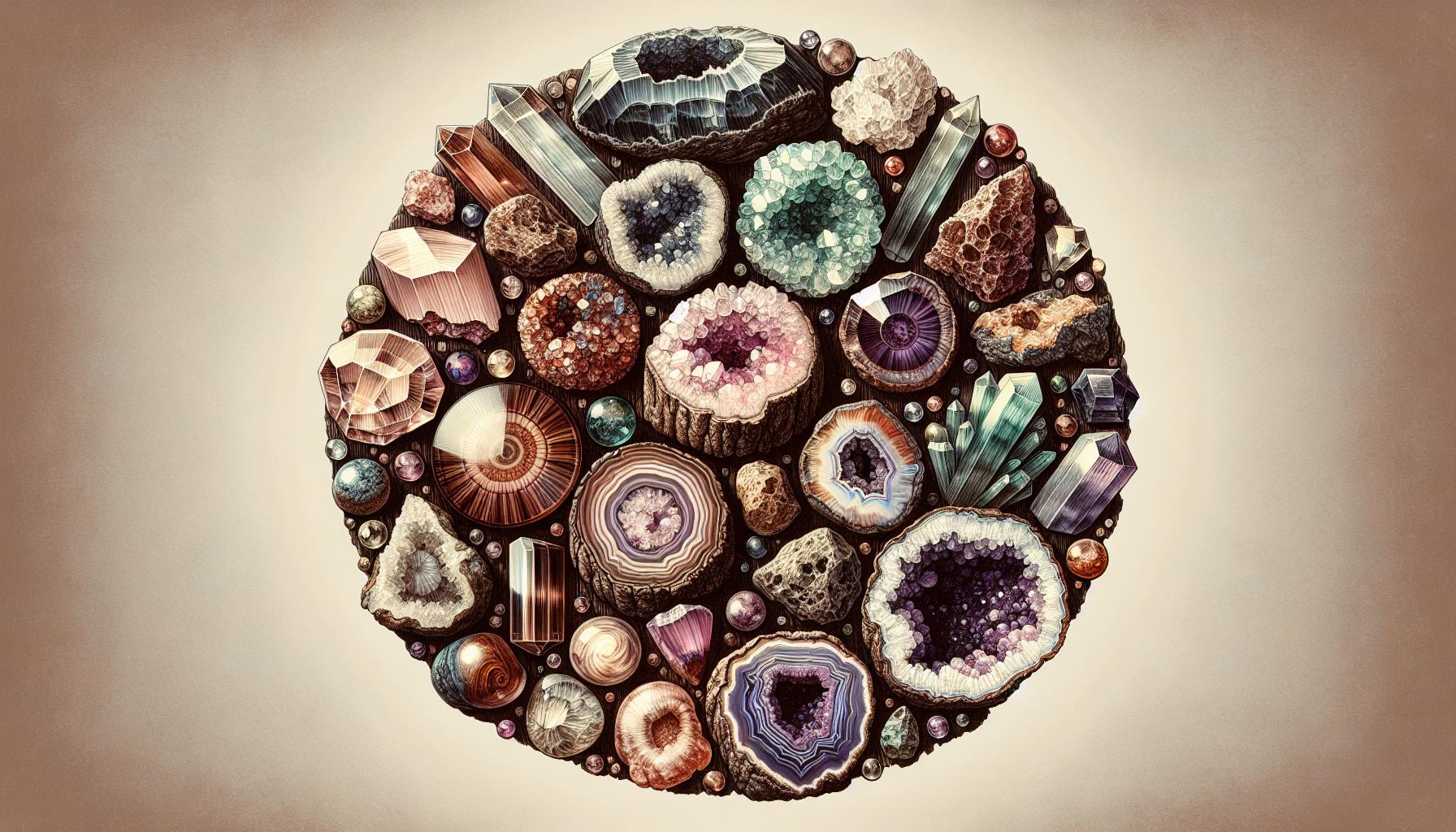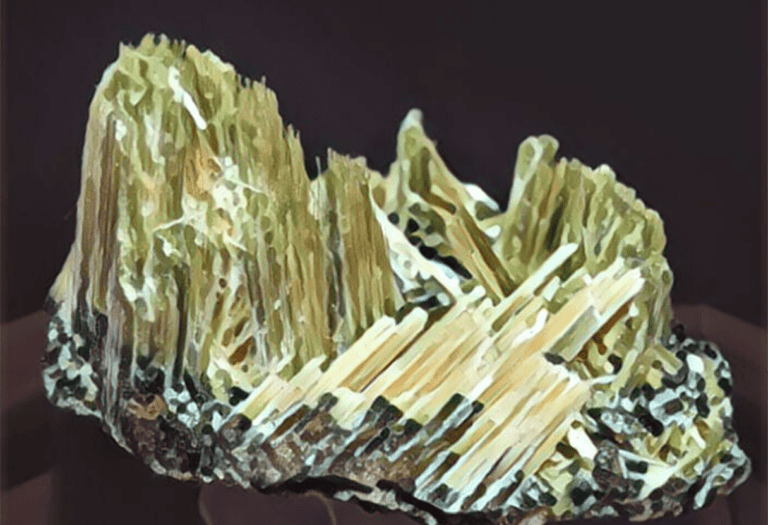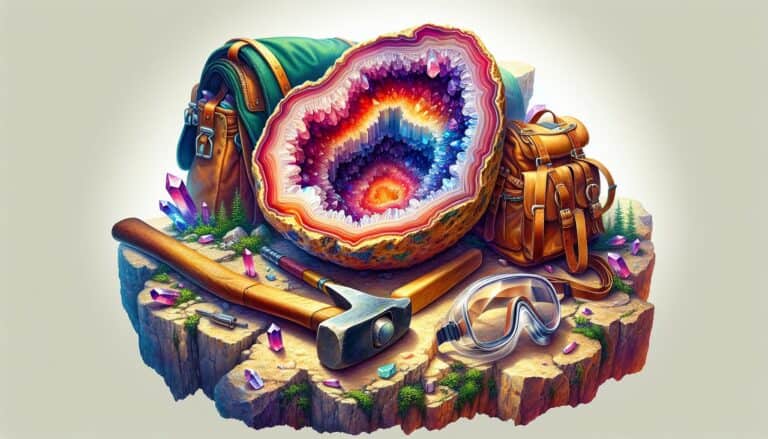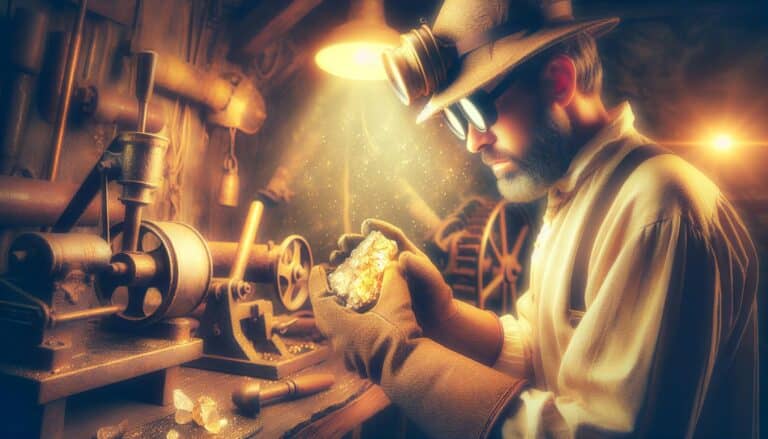Ready to embark on a rockhounding adventure in Iowa?
You’re in for a treat! The Hawkeye State is not just about cornfields and state fairs; it’s a hidden gem for rock enthusiasts. With its rich geologic history, Iowa offers a unique playground for those who love to dig deep and uncover natural treasures.
From the winding banks of the Mississippi River to the ancient sea beds in the state’s interior, Iowa’s diverse landscapes are ripe with opportunities for rockhounding. You’ll find everything from geodes brimming with sparkling crystals to prehistoric fossils.
So grab your gear and let’s explore the best spots in Iowa where you can scratch that rockhounding itch and what incredible finds await you.
Iowa’s diverse rockhounding sites offer geodes, fossils, and minerals, but remember to respect private property, obtain permits, and prioritize safety while exploring.
Iowa Rockhounding Locations
Ready to put on your boots and hit the trails? Iowa’s diverse locations are a testament to the state’s geologic diversity. Here’s where you can dig into the action:
Keokuk Geode Beds – Nestled along the Mississippi River, this internationally recognized site is a hotspot for geode enthusiasts. You’re likely to uncover geodes with spectacular quartz crystal formations. Remember, permission is required to rockhound on private lands.
Clayton County – The limestone and dolostone deposits here are a perfect hunting ground for crinoid and brachiopod fossils. Both amateur and experienced rockhounds will enjoy the thrill of discovering relics from the Paleozoic era.
Maquoketa Caves State Park – Discover the beauty of secondary mineral deposits while hiking and exploring the caves. It’s a family-friendly location, and while digging is not allowed in the park, the surrounding areas are ripe for rockhounding.
What You Can Find
Venturing into these areas, you stand a chance of finding a variety of interesting rocks and fossils:
- Geodes: These spherical rocks often contain a hollow cavity lined with crystals.
- Fossils: Iowa was once a seabed, so it’s common to find marine fossils such as coral and trilobites.
- Minerals: Calcite, pyrite, and gypsum can sometimes be found in the lesser-known rockhounding sites.
While exploring, always respect private property and adhere to the rockhound’s code of ethics. This means leaving no trace and considering the environmental impact of your activities. Don’t forget that some of the best discoveries come from sites less traveled, so keep an eye out for the road less taken. Your next find could be a testament to Iowa’s ancient oceanic past.
What Gemstones are Found in Iowa?

As you delve deeper into the rich tapestry of Iowa’s geological offerings, you’ll find that the state is not just about fossilized remnants but also about a treasure-trove of gemstones. These sparkling natural beauties offer a promising hunt for those with a keen eye and a bit of patience.
Iowa’s geodes, which you might find in the renowned Keokuk beds, often house a variety of quartz. You could uncover anything from clear quartz to smoky quartz, and even the occasionally rare amethyst. But it doesn’t stop there; within these spherical wonders, calcite and barite can also make an appearance, adding to the thrill of discovery.
Moving beyond the geode spectrum, Iowa’s sedimentary rocks prove to be fertile grounds for agate and jaspers, particularly in the gravels of rivers and streams. These silicate minerals, recognized for their colorful banding and intricate patterns, are not just visually captivating—they’re also popular among crafters and jewelry makers.
Venturing out into the rural expanses could yield the desirable chalcedony as well. This microcrystalline form of quartz presents itself in a variety of colors and is a find that would excite any amateur geologist or seasoned collector.
What’s important to note is that while gemstone hunting in Iowa, the surrounding environment plays a huge role in what you may discover. Stream beds, bluffs, and old mines are prime spots to explore. And as seasonal changes cause water levels to ebb and flow, new material is constantly being revealed, creating an ever-changing landscape for rockhounders.
Be sure to equip yourself with the appropriate tools—rock hammers, chisels, and safety glasses are essential. With the right gear and a little determination, your exploration for Iowa’s hidden gemstones might just result in a rewarding experience. Remember to secure permissions if you’re entering private lands and always tread lightly to minimize environmental impact.
What Sedimentary Rocks You Can Find in Iowa?

Iowa’s geologic composition is ripe with sedimentary rocks, laid down over millions of years in ancient seas. These rocks aren’t just common stones; they are records of geological history waiting to be discovered by you.
Limestone Treasures
In Iowa, limestone is particularly common. Formed from the compacted shells and skeletons of marine organisms, they are prevalent across the state’s landscape. You’ll find high-quality limestone primarily in the eastern Iowa quarry regions. These areas have been mined for over a century and are famous for fossil inclusions such as:
- Trilobites
- Coral
- Brachiopods
- Gastropods
Digging into limestone deposits can yield both impressive fossils and a look into the state’s distant, watery past.
Shale: From Mud to Rock
Another sedimentary rock you’ll encounter is shale. Often found alongside limestone, you can identify shale by its fine grains and layered appearance. This rock started its life as mud at the bottom of a sea or lake which eventually solidified. If you’re lucky, you might come across shale with fossil imprints of ancient plants or animals.
Sandstone and Iowa’s Landscapes
Sandstone varies in color and composition but always holds the story of sands long compacted and cemented together. The vibrant hues of sandstone cliffs and bluffs can make any rockhounding trip visually stunning. Look for sandstone along river valleys and bluffs where you can study cross-bedding and other sedimentary structures up close.
As you explore these sedimentary formations, remember that each rock tells a tale of geologic processes. Whether it’s in the layers of shale, the carbonated remnants within limestone, or the rich texture of sandstone, you’re witnessing the pages of Earth’s deep history. Keep in mind that many of these rocks are best found in outcroppings or exposed bedrock in regions where erosion has brought them to the surface. Ensure you have the necessary permissions to collect samples, and always practice Leave No Trace principles to keep these natural archives intact for future rockhounds.
What Metamorphic Rocks are found in Iowa?
Venturing into the Hawkeye State’s geology, you may be curious about the metamorphic rocks scattered throughout Iowa. Unlike the prevalent sedimentary rocks, metamorphic variants are not as common but still present in certain regions. They’re formed from pre-existing rocks that have undergone significant change due to heat, pressure, and chemically active fluids.
In Iowa, you’ll find the bulk of metamorphic rocks are concentrated in the northeastern section of the state as a part of the Wisconsin Magmatic Terrane. These rocks, which mainly consist of quartzite and slate, are older than most sedimentary stones you’ll encounter.
Quartzite is a hard, non-foliated rock that originates from sandstone. It undergoes a process of high heating and pressurization, altering its structure. If you’re looking for areas to find quartzite, keep an eye out for river valleys where erosion has exposed older rock formations.
Slate, on the other hand, is derived from shale. With slate, you’re looking at a fine-grained metamorphic rock that has a tendency to break into thin, flat pieces. This distinctive quality makes it a popular material in construction, particularly for roofing and flooring.
While exploring Iowa’s metamorphic rock locations, here’s what you should keep in mind:
- Permissions may be required to collect rock samples
- Always check local regulations since some areas might be protected
- Carry proper tools and wear safety gear
Recommended Sites for Metamorphic Rock Hunting
As you set out on your metamorphic rock adventure, consider these locations for potential discoveries:
- The Turkey River near Elkader for its arrays of quartzite
- Decorah area for its hidden slate fragments amidst the river bluffs
Remember, when rockhounding, respect the landscape and ensure you leave the environment as undisturbed as possible. Take nothing but pictures, leave nothing but footprints, and kill nothing but time on your journey to uncover Iowa’s geological treasures.
What Igneous Rocks can You Find in Iowa?
When you’re scouring the state for igneous rocks, your options in Iowa may seem limited compared to sedimentary or metamorphic varieties, but they’re certainly not absent. Iowa’s igneous rocks are primarily hidden gems, lying beneath the more prevalent surface rocks. You’ll find them mostly in the form of boulders and pebbles within glacial drifts, deposits left behind by the slow crawl of ancient glaciers across the Midwest.
These icy travelers picked up rocks from Canada and the northern United States, including igneous types, and carried them to Iowa. The most common igneous rocks you can encounter are granite and rhyolite. Granite, known for its flecked appearance and composed of quartz, feldspar, and mica, can be spotted in riverbeds and gravel pits. Rhyolite, with a similar composition but fine-grained texture, is less common but worth the search.
Below are some prime locations where you might stumble across these igneous treasures:
- Spencer in Clay County: renowned for its rich glacial deposits.
- The Des Moines Lobe, an area stretching from the northwest to central Iowa, offering a plethora of mixed rocks including igneous specimens.
While on your quest for igneous rocks, remember that public lands often have specific rules about collecting. Always check local guidelines to ensure you’re rockhounding responsibly. Private property requires explicit permission from landowners — be respectful and seek approval before starting your search.
Armed with a keen eye and perhaps a geological hammer, you can uncover the remarkable history of Earth’s inner workings tucked away in Iowa’s landscape. Look out for that distinctive sheen of quartz or the chunky texture of granite that signals an igneous find, hidden among the quarries and stream beds where nature has conveniently gathered and washed these stones for your discovery. Whether for your collection or simply the thrill of the find, igneous rockhounding in Iowa is a rewarding endeavor that teaches patience and persistence.
Panning for Gold in Iowa
Believe it or not, you can pan for gold in Iowa. Sure, it might not be the first state that comes to mind for gold prospecting, but don’t overlook the Hawkeye State’s potential for the valuable yellow metal. Gold in Iowa is primarily found in glacial drifts that date back to the Pleistocene Age and in streams that flow from those glaciated areas.
Iowa’s gold isn’t typically nugget-sized; you’ll find finer grains and flakes. The Big Sioux River and its tributaries, especially in Lyon County, are notable spots where gold panning enthusiasts have had success. Look for areas where water slows down, such as behind boulders or tree roots. That’s where gold, being heavy, tends to settle.
Another place worth exploring is the Volga River in Fayette County. Over time, prospectors have reported fine gold deposits within the river’s gravel bars. Remember to respect private property rights; always ask for permission if you’re venturing onto land that’s not public. Getting in touch with local prospecting clubs can provide you with valuable insights and companionship while you search for gold.
For those interested in the legal aspects of gold panning in Iowa, it’s crucial to know that you can pan on public lands that aren’t state or national parks. However, some locations might require a permit, so it’s best to check with the state’s Department of Natural Resources before you start. They can provide the most current regulations and guidelines to ensure that your gold panning expedition is both fun and lawful.
When embarking on your gold panning adventure, you’ll need a few essential tools: a pan, a sluice box, and, if you’re feeling thorough, a metal detector can prove useful. Starting with just a pan is perfectly fine as you’re getting the hang of the process. Remember, the aim is to separate fine gold particles from the lighter sands and gravels in the water.
As you immerse yourself in the pursuit of this precious metal, embrace the journey as much as the potential finds. Venture out after heavy rains — that’s when gold can be churned up and redistributed, increasing your chances of a lucky find. Your patience and persistence could very well be rewarded with the gleam of gold in your pan.
Rocks and Minerals Found in Iowa
When you’re venturing into the diverse terrains of Iowa, you’ll be struck by the variety of rocks and minerals that can be unearthed. Keokuk geodes are among the most sought-after treasures by rockhounds in the region. These geological wonders, which can look like ordinary rocks on the outside, often contain spectacular quartz crystals or other mineral formations inside.
Beyond the geodes, you’ll want to keep an eye out for Iowa’s state rock, the limestone. Rich in fossilized remnants from ancient sea beds, these pieces give you a tangible connection to historic marine life that once dominated the area. Limestone is often easy to identify and can be found nearly statewide, making it a staple for beginner and seasoned rockhounds alike.
In certain areas, particularly in the northeastern regions of the state, Devonian-age fossils provide a fascinating glimpse into the past. Exciting finds like brachiopods and crinoids are embedded in the rock, and their extraction can be both rewarding and educational. Remember to check local regulations before fossil hunting, as some regions have specific rules about collection.
Agates and chalcedony are also hidden within Iowa’s geologic palette. These semiprecious stones exhibit a range of colors and patterns, each piece a unique example of the beauty buried beneath the soil. Many are drawn to these discoveries for their lapidary potential, as polished slices exhibit stunning beauty.
If your interest leans towards the more precious end of the spectrum, don’t despair. Iowa’s streams have been known to carry small diamonds that have traveled from afar. While these finds are rare, knowing that they’re a possibility adds an additional thrill to your search.
Essential Tools for Rock and Mineral Hunting in Iowa
Before you head out, make sure you’re equipped with the right tools:
- Geologist’s hammer
- Chisels
- Gloves
- Safety goggles
- Field guide for identification
Armed with these, you’re set to explore Iowa’s rich geological landscape. Whether you’re searching river beds after a rain or exploring the limestone quarries, you’ll find that each rock and mineral has a story. Unearth these stories one stone at a time and immerse yourself in the natural history that surrounds you.
Where Can I Find Fossils in Iowa?
Fossils offer a glimpse into the Earth’s ancient past, and Iowa is a treasure trove for anyone interested in paleontology. The state’s sedimentary rock formations, particularly limestone, have preserved a variety of marine fossils from millions of years ago. Devonian Fossil Gorge near Coralville is a renowned place where after a flood revealed a 375-million-year-old Devonian ocean floor, visitors have since been able to uncover an abundance of marine fossils.
One can’t-miss hotspot for fossil enthusiasts is the Maquoketa Caves State Park. With its limestone formations, the park beckons you to find brachiopods, cephalopods, and crinoids embedded within. The rocky overhangs and cave entrances provide perfect nooks where these ancient treasures remain hidden. Remember, though, to respect park rules regarding fossil collection—some areas allow it, while others are protected for educational and scientific study.
If you’re up for a trip to the northeast part of the state, Clayton County has earned fame among fossil hunters. The area’s older sedimentary deposits are bursting with fossilized brachiopods, gastropods, and trilobites. And don’t overlook riverbanks and streams throughout Iowa, as waterways continually expose new fossil beds.
Be sure to bring your rockhound tools, charged with the essentials: a sturdy hammer, chisel, and protective eyewear. These are crucial for safely extracting specimens. Also, remember your sense of adventure. Each fossil you come across is a story waiting to be told, a puzzle piece of Iowa’s geological history.
As you’re planning your Iowa fossil hunting expedition, check local regulations. Some thriving fossil hunting grounds are on private properties or require specific permissions for collecting. Doing your research beforehand ensures you’re respecting the land and the law, guaranteeing the continuation of this exciting pastime for years to come.
Iowa Rockhounding Laws & Regulations
When you set out to explore Iowa’s geological bounties, it’s crucial to understand that specific laws and regulations govern the collection of rocks, minerals, and fossils. Adhering to these rules ensures that you remain within legal boundaries, respecting both the land and the hobby of rockhounding.
Iowa’s state parks and preserves are often the first pit stops for many rockhounds. However, you’re not allowed to remove any natural materials from these areas without authorization. This includes rocks, minerals, and especially archaeological artifacts which are protected by law. Before you pocket any finds, confirm the regulations of the specific park or preserve you’re visiting.
For rockhounding on private property, you must always obtain permission from the landowner. Trespassing to collect specimens without consent is illegal, and respecting the rights of property owners fosters a positive image of the rockhounding community.
Permits and Accessibility
Some areas within Iowa may grant collection permits for educational or personal use. These permits often come with a set of guidelines like:
- Collection limits (by volume or weight)
- Restrictions on the use of tools
- Rules protecting specific geological or paleontological features
If permits are available, you can usually acquire them either on-site or through contact with the agency managing the land. Local rockhounding clubs and organizations can be invaluable resources, offering up-to-date information about permits and regulations.
Public lands like national forests—under the jurisdiction of federal laws—adopt a more lenient approach to casual collecting. Small amounts of rocks, minerals, and common invertebrate fossils can be collected without a permit for personal use. Nevertheless, vertebrate fossils, which include animals with a backbone, remain off-limits and collecting them can result in significant legal consequences.
Note that commercial collecting, selling of minerals, or significant excavation on any public land is strictly regulated and generally prohibited without a special permit. Always check the current rules specific to the area you plan to visit as regulations can change, and ignorance of the law excuses no one.
Rockhounding ethics not only involve legality but also stewardship. Practicing “Leave No Trace” principles and filling in any holes you dig go a long way in preserving Iowa’s pristine geology for future enthusiasts to enjoy.
Rockhounding Tips for Beginners in Iowa
Gearing Up: Essential Tools for Rockhounding
Before you embark on your rockhounding adventure in the rich terrains of Iowa, you’ll need to gear up with some essential tools. This equipment is key to safely and effectively uncovering the minerals and fossils you come to find.
- Rock Hammer: Your trusty rock hammer will be your go-to tool for chipping away at rock beds and splitting stones.
- Chisels and Pick: Different sizes of chisels and a small pick can help you extract your finds with precision.
- Safety Glasses: Protect your eyes from flying debris with a durable pair of safety glasses.
- Gloves: A pair of sturdy gloves will guard your hands against sharp edges and rough surfaces.
- Bucket or Backpack: You’ll need something to carry your finds as well as your tools; a hardy bucket or a strong backpack can do the trick.
- Field Guide: A good field guide specific to Iowa will assist in identifying your discoveries on the go.
Remember to start with the basics and, as your interest and proficiency grow, you can invest in more specialized tools like geologist’s picks or ultraviolet lights for checking fluorescent minerals.
Safety Tips While Rockhounding
Your safety while rockhounding cannot be overstressed. Keep these tips in mind to ensure that your trips are not only successful but also free from harm:
- Stay Aware of Your Surroundings: Be mindful of potential hazards such as loose rocks, steep cliffs, and wildlife.
- Dress Appropriately: Wear protective and weather-appropriate clothing including long pants, sturdy boots, and hats.
- Keep Hydrated and Nourished: Always bring enough water and snacks to stay hydrated and energized.
- Inform Others: Let someone know where you’re going and when you expect to return, especially if you’re heading to remote areas.
Adhering to these safety tips ensures that your focus remains on the excitement of discovery rather than dealing with avoidable incidents.
Legal Guidelines for Rockhounding Enthusiasts
Abiding by legal guidelines is just as important as having the right tools and following safety protocols. Here’s what you need to know as a responsible rockhound:
- Collection Permits: Check if the area you intend to visit requires a collection permit, particularly for educational or personal use.
- State Parks and Preserves: Understand that removal of natural materials from state parks and preserves is typically prohibited without authorization.
- Private Property: Always obtain permission from landowners before rockhounding on private lands.
- Fossil Collecting: Be aware that while collecting plant fossils may be acceptable, vertebrate fossils often require a permit.
- Leave No Trace: Embody the “Leave No Trace” principles by not disturbing the ecosystem, leaving sites as you found them, and disposing of waste properly.
By following these guidelines, you’ll respect the natural heritage of Iowa and ensure that rockhounding remains an enjoyable pursuit for all. Keep in mind that regulations can vary, so always double-check the rules for the specific area you plan to visit before you set out with your hammer and chisel.
Conclusion: Rockhounding Location Guide & Map
You’re now equipped with the knowledge to embark on your rockhounding adventure in Iowa.
Remember, whether you’re searching for the dazzling Keokuk geodes or tracing the outlines of ancient fossils in limestone, every find enriches your understanding of the state’s geological past.
Keep those tips for beginners in mind—safety, preparation, and legality are key to a successful outing. And as you explore, always practice “Leave No Trace” to ensure that Iowa’s natural wonders remain intact for fellow enthusiasts to enjoy.
Happy rockhounding!







